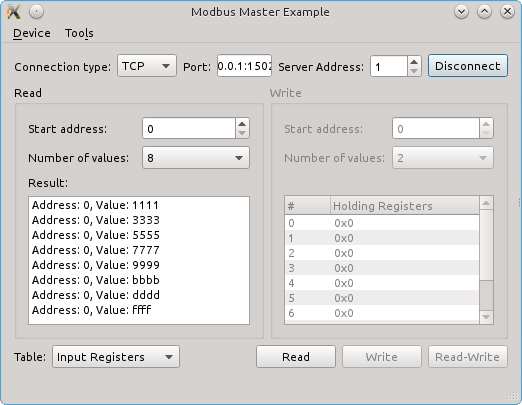
Error detection is handled by the communication protocol. Note: This enumeration is used for setting the baud rate of the device separately for each direction on some operating systems (for example, POSIX-like). This enum describes the possible directions of the data transmission. enum QSerialPort:: Direction flags QSerialPort:: Directions We strongly advise against using it in new code.
QT SERIAL PORT BAUD RATE CODE
It is provided to keep old source code working. It is almost universally used in newer applications. It is used for most kinds of data, as this size matches the size of a byte. The number of data bits in each character is 8. It generally only makes sense with older equipment such as teleprinters.

The number of data bits in each character is 7. The number of data bits in each character is 6.

The number of data bits in each character is 5. There is one issue to be aware of, though: make sure that enough data is available before attempting to read by using the operator>() overloaded operator. The QSerialPort class can also be used with QTextStream and QDataStream's stream operators (operator>()). However, in a GUI application, blocking serial port should only be used in non-GUI threads, to avoid freezing the user interface.įor more details about these approaches, refer to the example applications. A blocking serial port does not require an event loop and typically leads to simpler code. Programming with a blocking serial port is radically different from programming with a non-blocking serial port. If waitForReadyRead() returns false, the connection has been closed or an error has occurred. See the following example: int numRead = 0, numReadTotal = 0 Use the close() method to close the port and cancel the I/O operations. You can limit the size of the read buffer using setReadBufferSize(). If not all the data is read at once, the remaining data will be available for later as new incoming data is appended to the QSerialPort's internal read buffer. Alternatively the readLine() and readAll() convenience methods can also be invoked.

Once you know that the ports are ready to read or write, you can use the read() or write() methods. It is also possible to use the pinoutSignals() method to query the current pinout signals set. There are a couple of properties to work with the pinout signals namely: QSerialPort::dataTerminalReady, QSerialPort::requestToSend. You can reconfigure the port to the desired setting using the setBaudRate(), setDataBits(), setParity(), setStopBits(), and setFlowControl() methods. Having successfully opened, QSerialPort tries to determine the current configuration of the port and initializes itself. Note: The serial port is always opened with exclusive access (that is, no other process or thread can access an already opened serial port). You can pass an object of the helper class as an argument to the setPort() or setPortName() methods to assign the desired serial device.Īfter setting the port, you can open it in read-only (r/o), write-only (w/o), or read-write (r/w) mode using the open() method. This is useful to obtain the correct name of the serial port you want to use. You can get information about the available serial ports using the QSerialPortInfo helper class, which allows an enumeration of all the serial ports in the system.

Provides functions to access serial ports. SetPort(const QSerialPortInfo & serialPortInfo) SetBaudRate(qint32 baudRate, Directions directions = AllDirections) QSerialPort(const QSerialPortInfo & serialPortInfo, QObject * parent = Q_NULLPTR)īaudRate(Directions directions = AllDirections) constĬlear(Directions directions = AllDirections) QSerialPort(const QString & name, QObject * parent = Q_NULLPTR) QSerialPort(QObject * parent = Q_NULLPTR)


 0 kommentar(er)
0 kommentar(er)
